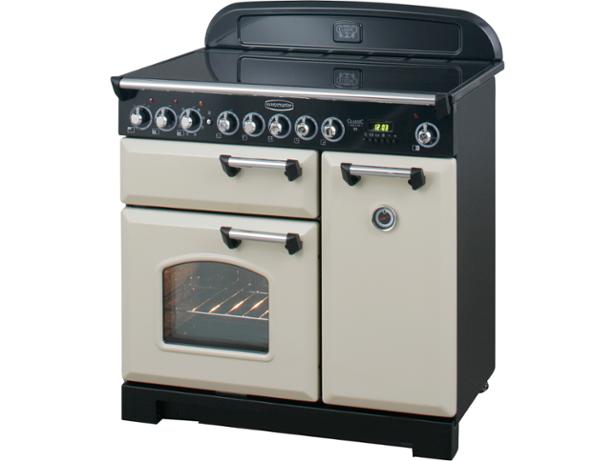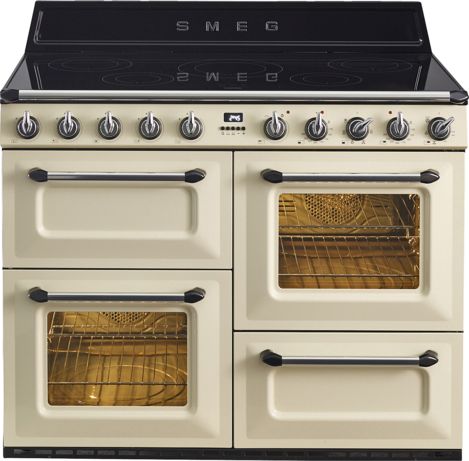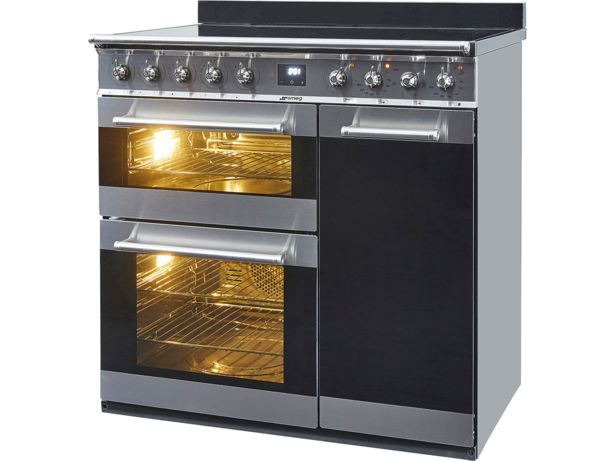By clicking a retailer link you consent to third-party cookies that track your onward journey. If you make a purchase, Which? will receive an affiliate commission, which supports our mission to be the UK's consumer champion.
How we test range cookers

Our independent tests reveal whether a range cooker's oven sticks to the temperature you set, and whether its grill and hob will brown and fry your food to perfection.
Unlike free-to-access websites that typically get all the cookers they review free from manufacturers or their PR representatives, we buy all the appliances we test ourselves. That means you can have complete trust in our verdicts.
The Which? overall percentage score is calculated purely on the measurements and ratings supplied by our laboratory, meaning there's no room for unconscious bias when giving our ratings.
If you want to find out about the range cookers we've tested and read our top recommendations and buying advice, go to our guide on the best range cookers.
What are Which? Best Buy and Don’t Buy range cookers?

A quick guide to the recommendations you'll see on our range cooker reviews.
Best Buy range cookers
Best Buys are given to the range cookers that impress most in our tests. A cooker that scores 66% or more is a Best Buy and comes with a firm overall recommendation, although you should still read our full reviews to check for any weaknesses that might impact your buying decision.
Best Buy cookers typically tick the most important boxes - they heat up quickly and accurately, grill effectively and have decent built-in hobs.
Don’t Buy range cookers
Any cooker that scores 45% or lower is a Don't Buy that's best avoided.
These models tend to fall down in the most important areas - they're awkward to use, with ovens that can't reliably bake a cake and hobs you'd even struggle to heat baked beans on.
How is the Which? score calculated?
The Which? overall score is a percentage. This score only takes into account the results of our tests and ignores price completely.
This means all the cookers are tested on exactly the same scale, so you can compare any cooker at any price and see how it measures up against its rivals in key areas, regardless of its fuel type.
Weightings and star ratings
A Which? overall score is made up of dozens of individual tests and checks, from key factors such as the hob's speed of heating up, and how well the heat from the grill is distributed across a sheet pan.
To keep things simple, the most important scores are shown as star ratings out of five in the test results section of each review. This gives you an easy-to-compare list of the strengths and weaknesses of different models.
Which? members have told us that the most important features of a range cooker are the oven, grill and hob, so we put more emphasis on these areas of our tests when we award a cooker an overall score.
On top of this, we know that how easy the cooker is to use and clean are both considerations, along with how efficient the cooker is.
The full score breakdown is as follows:
- 40% oven performance
- 25% ease of use and cleaning
- 20% hob performance
- 10% grill performance
- 5% energy efficiency
Read on to find out exactly what goes into each of these scores.
Our key testing criteria
Below are the key cooker testing categories and how we evaluate each one:
Oven performance
Key question: Does the oven heat up quickly and spread heat evenly?
Everyone varies the temperature at which they use their oven, so our tests check how quickly the oven in each cooker reaches two set temperatures.
We set conventional electric ovens and gas ovens to heat up to 180°C (gas mark 4) and 200°C (gas mark 6), and fan-assisted electric ovens to 150°C and 180°C. As well as noting the speed at which they reach these temperatures from cold, we then record how closely each oven sticks to the set temperature. Our tests have found ovens that veer wildly away from what you would expect – sometimes by more than 40°C. Top-scoring Best Buy ovens, however, stick closely to the expected temperature.
Next, we bake a tray of shortbread in the oven. This delicate bake clearly shows how effective the cooker is at spreading heat evenly throughout the oven cavity. Ovens that leave pale parts or burnt corners get marked down in our tests, while those that turn the shortbread an even golden brown across the whole tray get top marks.

Our second baking test involves making a large sponge cake and measuring its vital statistics when it emerges from the oven. If it's well risen and evenly browned, it gets a high score, but flat, sunken or unevenly baked cakes lose points.

Key question: How much can you fit into the cooker's oven?
Manufacturers give the total internal dimensions of an oven, but this doesn't give a clear picture of what you will actually be able to fit in. So we use a plastic turkey, chicken or roast beef joint and put it on roasting tray – then we add another tray if we can – to find out whether you'll be able to cook a full Christmas dinner in there, or if you'll be limited to a smaller Sunday roast. As range cookers tend to have more than one oven, we try out all of them.

As well as using the fake roast joints, we also record the useable space within each oven. We measure from side to side, and the distance from the inside of the door to the back of the oven. When it comes to the height, we measure from the top of the lowest shelf to 3cm below the top of the oven, to give a real feel for the actual height available.
Oven performance accounts for 40% of a cooker's score.
Ease of use and cleaning
Key question: Is the cooker easy to use?
An independent panel judges each range cooker for ease of use. They look at how easy it is to use the settings on the ovens, grills and hob, as well as how clear the markings are and whether you have a clear view into the oven while food is cooking.
Key question: Is the cooker easy to clean?
To assess the ease of cleaning a cooker, we intentionally create common kitchen messes on various parts - including boil-overs on the hob and baked-on grime in the oven. Our expert assessors then begin cleaning with common household products, noting things like how difficult it is to access certain nooks and crannies and how easy it is to lift off stains and residues.
We also look at the performance of inbuilt self-cleaning features, and whether parts are dishwasher proof.
Ease of use and cleaning accounts for 25% of a cooker's score.
Hob performance
Key question: How effective is the cooker's hob?
When you're in a hurry to heat your soup, a range cooker with a speedy hob should do the job. We test how rapidly each hob will heat up a pan filled with water from 15°C to 90°C. Quick hobs take less than five minutes, but the slowest will keep you waiting more than double this time. Best Buy hobs also excel at the other end of the scale, allowing you to simmer delicate ingredients.
If you regularly fry bacon, then you'll be interested in our heat-distribution test, where we measure how well heat spreads across the base of a frying pan – the best hobs spread the heat evenly rather than concentrating it in particular spots. Our final tests involve recording what happens when you power down the hob – some retain heat and will keep cooking your food, while others cool down quickly.
Hob performance accounts for 20% of a cooker's score.
Grill performance
Key question: How evenly does the cooker's grill brown food?
We cut the crusts off white bread and cover the cooker's grill pan with it, to let us see how far and how evenly the grill spreads its heat.

A great grill can brown virtually all of the bread, but our tests have found many that struggle to heat more than 50% of the area – and the worst models only toast bread that is placed directly under the element. This means that you would find yourself shifting food around to get anything approaching even browning.
Grill performance makes up 10% of a cooker's score.
Energy efficiency
Key question: How energy efficient is the cooker?
As all food is variable, we maintain consistency by heating up 2kg of bricks in the main oven for 1hr 40 mins. This simulates about how long you'd roast a whole chicken for. In range cookers the conventional electric ovens are set at 200°C, electric fan ovens to 170°C, and gas ovens to gas mark 6.
We measure how much energy each oven uses, and convert this into a score based on the running costs for each model.
Energy efficiency makes up 5% of a cooker's score.
Find a great range cooker with Which? reviews
In the realm of culinary appliances, range cookers are often viewed as the pinnacle of kitchen sophistication. Their grandeur is matched only by their promise of delivering a versatile and enhanced cooking experience.
However, as is true in all walks of life, all that glitters is not gold - we've seen some staggeringly expensive and extravagant models stumble when it comes to delivering consistent heating and good cooking results.
So, whether you're a budding home cook or a seasoned chef, let us illuminate your path to the perfect range cooker – one that truly deserves its place at the heart of your kitchen.
Browse all of our range cooker reviews.



